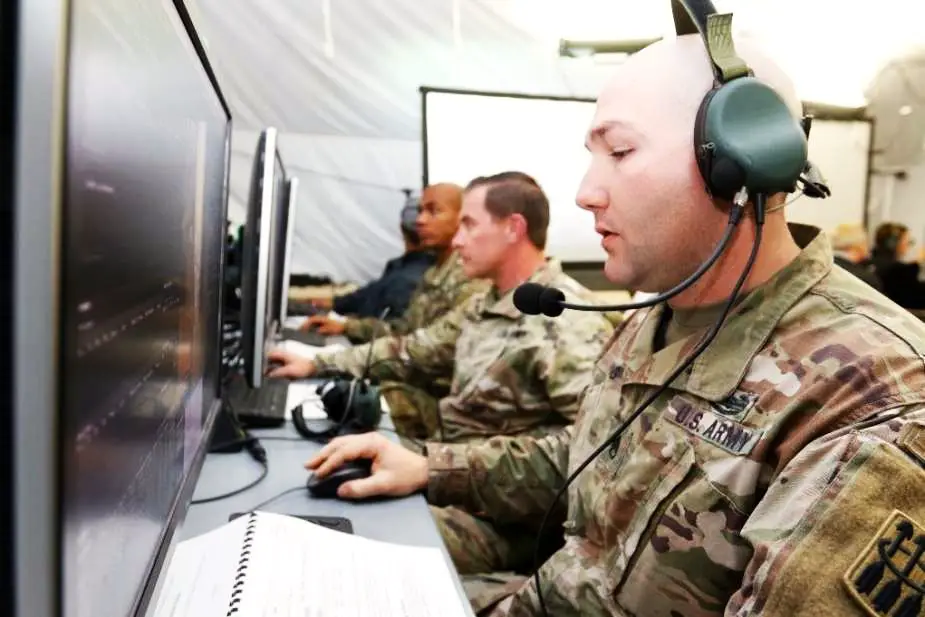Breaking news
US Army tests Northrop Grumman’s Integrated Battle Command System in homeland defense scenarios.
Northrop Grumman’s Integrated Battle Command System (IBCS) defended the National Capital Region against simulated cruise missiles and compromised aircraft in a series of recent demonstrations, an evolution of technical capabilities for the system.
Follow Army Recognition on Google News at this link

U.S. Army service members using the Integrated Battle Command System (IBCS) at Redstone Arsenal, Huntsville, Alabama (Picture source: U.S. Army)
As the cornerstone of the U.S. Army’s efforts to modernize air and missile defense, IBCS now has shown its data-centric extensibility to take on additional missions including homeland defense, as it has proven through previous rigorous testing of its ability to defend the warfighter.
During the first two demonstrations, IBCS’ open architecture allowed the rapid integration of existing Army and Air Force sensors and effectors, such as Sentinel, Avenger and National Advanced Surface-to-Air-Missile System (NASAMS).
Through the concluding demonstration, soldiers from the 263rd Air and Missile Defense Command used IBCS and the Joint Track Management Capability to integrate Navy sensor information to significantly extend the defended area across the National Capital Region. These successful demonstrations further prove IBCS’ ability to unify sensors and shooters to decide the best action to out-pace and defeat complex threats.
Rebecca Torzone, vice president and general manager of combat systems and mission readiness at Northrop Grumman: “IBCS is continuously showing its ability to unify all available sensors and shooters. Through the recent National Capital Region demonstrations, IBCS proved its capabilities in providing homeland defense against cruise missiles and other aerial threats. IBCS is ready now to take on tomorrow’s threats.”
Details on IBCS
IBCS is a revolutionary command control system that unifies current and future assets across the battlespace, regardless of source, service or domain. Through its modular, open and scalable architecture, it gives warfighters capabilities they never had before by fusing sensor data for a single, actionable picture of the full battlespace that enables rapid, informed decisions to optimize shooters. This capability extends the battlespace, giving warfighters more time to make decisions on how best to defeat threats. This system is the centerpiece of the U.S. Army’s modernization strategy for air and missile defense, supporting a multi-domain future and continued modernization of U.S. and Allied capabilities.
Defense News October 2023


























